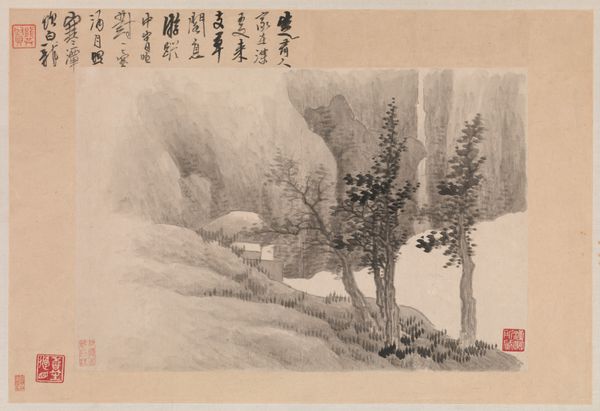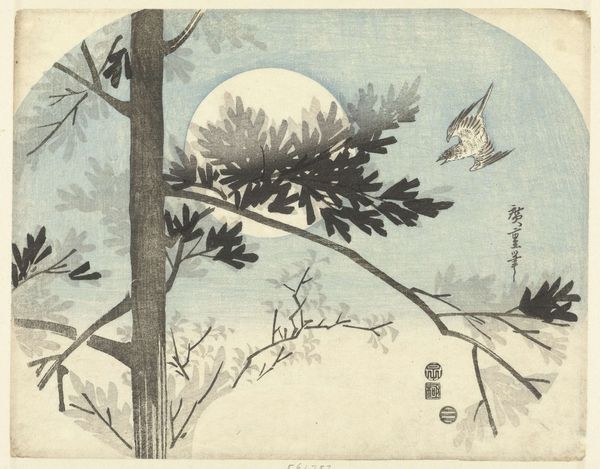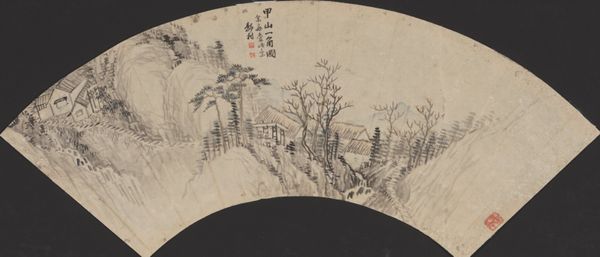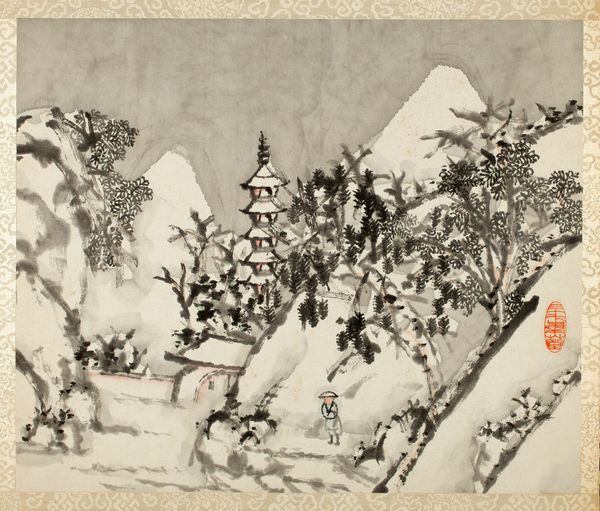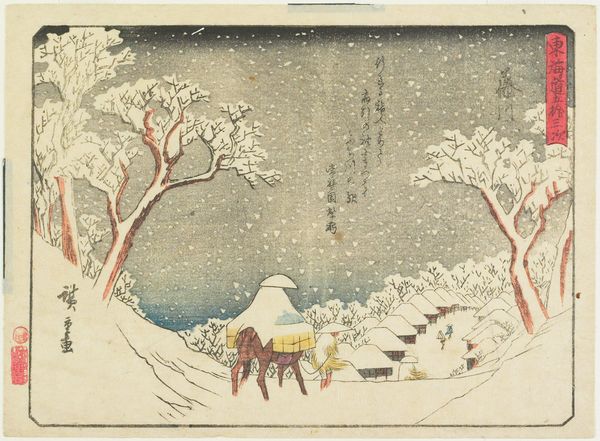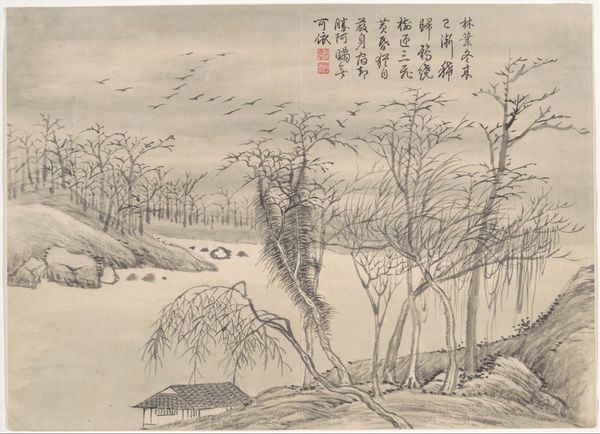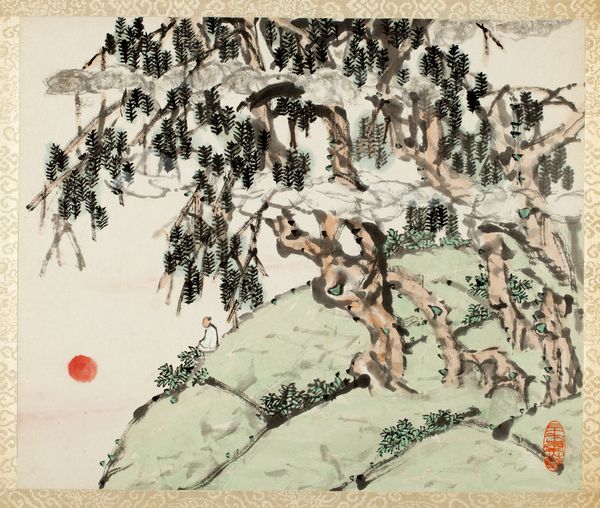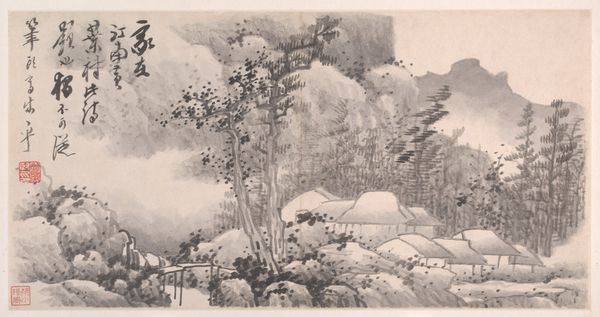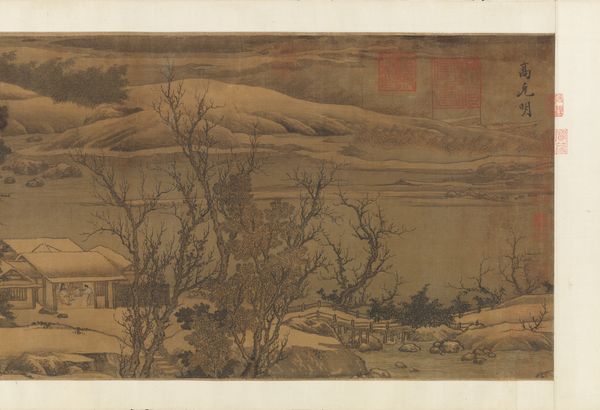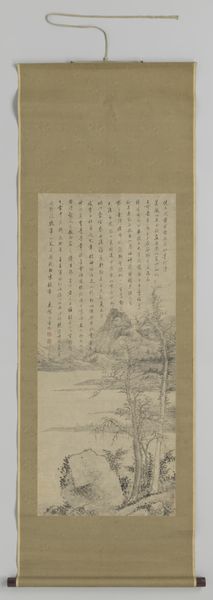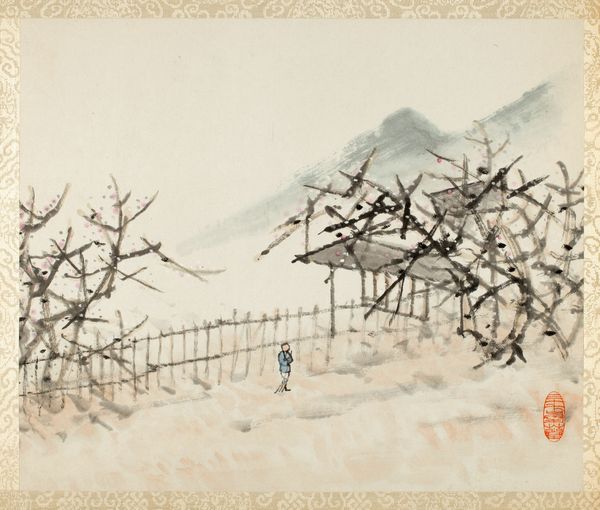
painting, paper, watercolor, ink
#
water colours
#
ink painting
#
painting
#
asian-art
#
landscape
#
figuration
#
paper
#
watercolor
#
ink
#
orientalism
Dimensions: Each leaf: 30.5 × 36.3 cm (12 × 14.25 in.)
Copyright: Public Domain
Curator: Here, we have Xugu's "Landscapes for Liu Songfu." This piece, whose exact date is still debated but likely falls between 1644 and 1911, employs ink and watercolours on paper. It offers a scene with a figure contemplating a wintry copse. Editor: There's a distinct melancholic mood, I think, wouldn't you say? It feels solitary, like the world is holding its breath. The figure is small against the backdrop of these looming, bare trees. Curator: The seeming simplicity is deceptive, really. Chinese landscape painting is loaded with symbolism, acting as a metaphor for personal and societal harmony, or, conversely, disquiet. It’s interesting to consider what turmoil the patron, Liu Songfu, might have been experiencing. Editor: Given the possible timeframe, which spans periods of immense upheaval in China, one might argue the landscape mirrors a personal or collective sense of displacement. The choice of desolate imagery evokes a certain precarity. Is this a personal statement or something more? Curator: It's always a dance between individual expression and adherence to artistic convention. Xugu was working within a tradition that highly valued subtlety and implication. The act of dedicating this, then, takes on social meaning as well as spiritual consideration. Editor: And what does that dedication tell us? About the artist, patron, their relationship? Landscape painting of the era can provide nuanced political commentary while appearing innocuous to outsiders, circumventing direct censorship. Curator: Precisely. The layering of ink washes to create depth, the precise brushstrokes that define each branch - these choices weren't arbitrary. They reflect an understanding of the aesthetic expectations of his peers but could also be pushing at the boundaries of what was permissible, too. Editor: Looking closely at the figure, that's another entry point. Their clothing, their posture—the artist utilizes specific details to situate him culturally and, perhaps, philosophically, inviting the viewer to speculate. This tiny human existing within these brushstrokes creates a fascinating dialectic. Curator: The art serves as both an observation of society and a place for reflection. Editor: I see it now - an incredible confluence of medium and social discourse captured across a paper surface. Curator: A view to ruminate over long after viewing it.
Comments
No comments
Be the first to comment and join the conversation on the ultimate creative platform.
